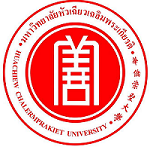Please use this identifier to cite or link to this item:
https://has.hcu.ac.th/jspui/handle/123456789/3607Full metadata record
| DC Field | Value | Language |
|---|---|---|
| dc.contributor.author | Qing Zhao | - |
| dc.contributor.author | Mubarak Almutairi | - |
| dc.contributor.author | Arun Tailor | - |
| dc.contributor.author | Adam Lister | - |
| dc.contributor.author | Nicolas Harper | - |
| dc.contributor.author | James Line | - |
| dc.contributor.author | Xiaoli Meng | - |
| dc.contributor.author | Jirawat Pratoomwun | - |
| dc.contributor.author | Kanoot Jaruthamsophon | - |
| dc.contributor.author | Chonlaphat Sukasem | - |
| dc.contributor.author | Yonghu Sun | - |
| dc.contributor.author | Lele Sun | - |
| dc.contributor.author | Monday O Ogese | - |
| dc.contributor.author | David J MacEwan | - |
| dc.contributor.author | Munir Pirmohamed | - |
| dc.contributor.author | Jianjun Liu | - |
| dc.contributor.author | David A Ostrov | - |
| dc.contributor.author | Hong Liu | - |
| dc.contributor.author | Furen Zhang | - |
| dc.contributor.author | Dean J Naisbitt | - |
| dc.contributor.author | จิรวัส ประทุมวัน | - |
| dc.contributor.author | คณุตม์ จารุธรรมโสภณ | - |
| dc.contributor.author | ชลภัทร สุขเกษม | - |
| dc.contributor.other | University of Liverpool. Department of Pharmacology & Therapeutics | en |
| dc.contributor.other | University of Liverpool. Department of Pharmacology & Therapeutics | en |
| dc.contributor.other | University of Liverpool. Department of Pharmacology & Therapeutics | en |
| dc.contributor.other | University of Liverpool. Department of Pharmacology & Therapeutics | en |
| dc.contributor.other | University of Liverpool. Department of Pharmacology & Therapeutics | en |
| dc.contributor.other | University of Liverpool. Department of Pharmacology & Therapeutics | en |
| dc.contributor.other | University of Liverpool. Department of Pharmacology & Therapeutics | en |
| dc.contributor.other | Huachiew Chalermprakiet University. Faculty of Medical Technology | en |
| dc.contributor.other | Mahidol University. Faculty of Medicine Ramathibodi Hospital | en |
| dc.contributor.other | Mahidol University. Faculty of Medicine Ramathibodi Hospital | en |
| dc.contributor.other | Shandong First Medical University & Shandong Academy of Medical Sciences | en |
| dc.contributor.other | Shandong First Medical University & Shandong Academy of Medical Sciences | en |
| dc.contributor.other | University of Liverpool. Department of Pharmacology & Therapeutics | en |
| dc.contributor.other | University of Liverpool. Department of Pharmacology & Therapeutics | en |
| dc.contributor.other | University of Liverpool. Department of Pharmacology & Therapeutics | en |
| dc.contributor.other | Human Genetics, Genome Institute of Singapore | en |
| dc.contributor.other | University of Florida. College of Medicine | en |
| dc.contributor.other | Shandong First Medical University & Shandong Academy of Medical Sciences | en |
| dc.contributor.other | Shandong First Medical University & Shandong Academy of Medical Sciences | en |
| dc.contributor.other | University of Liverpool. Department of Pharmacology & Therapeutics | en |
| dc.date.accessioned | 2025-02-01T10:37:54Z | - |
| dc.date.available | 2025-02-01T10:37:54Z | - |
| dc.date.issued | 2021 | - |
| dc.identifier.citation | J Invest Dermatol. 2021 Oct;141(10):2412-2425.e2. | en |
| dc.identifier.other | doi: 10.1016/j.jid.2021.03.014 | - |
| dc.identifier.uri | https://has.hcu.ac.th/jspui/handle/123456789/3607 | - |
| dc.description | สามารถเข้าถึงบทความฉบับเต็ม (Full Text) ได้ที่ : https://pubmed.ncbi.nlm.nih.gov/33798536/ | en |
| dc.description.abstract | HLA-B∗13:01 is associated with dapsone (DDS)-induced hypersensitivity, and it has been shown that CD4+ and CD8+ T cells are activated by DDS and its nitroso metabolite (nitroso dapsone [DDS-NO]). However, there is a need to define the importance of the HLA association in the disease pathogenesis. Thus, DDS- and DDS-NO‒specific CD8+ T-cell clones (TCCs) were generated from hypersensitive patients expressing HLA-B∗13:01 and were assessed for phenotype and function, HLA allele restriction, and killing of target cells. CD8+ TCCs were stimulated to proliferate and secrete effector molecules when exposed to DDS and/or DDS-NO. DDS-responsive and several DDS-NO‒responsive TCCs expressing a variety of TCR sequences displayed HLA class-I restriction, with the drug (metabolite) interacting with multiple HLA-B alleles. However, activation of certain DDS-NO‒responsive CD8+ TCCs was inhibited with HLA class-II block, with DDS-NO binding to HLA-DQB1∗05:01. These TCCs were of different origin but expressed TCRs displaying the same amino acid sequences. They were activated through a hapten pathway; displayed CD45RO, CD28, PD-1, and CTLA-4 surface molecules; secreted the same panel of effector molecules as HLA class-I‒restricted TCCs; but displayed a lower capacity to lyse target cells. To conclude, DDS and DDS-NO interact with a number of HLA molecules to activate CD8+ TCCs, with HLA class-II‒restricted CD8+ TCCs that display hybrid CD4‒CD8 features also contributing to the promiscuous immune response that develops in patients. | en |
| dc.language.iso | en_US | en |
| dc.subject | T cells | en |
| dc.subject | ทีเซลล์ | en |
| dc.subject | Allele frequency | en |
| dc.subject | ความถี่ของยีน | en |
| dc.subject | Drug Hypersensitivity | en |
| dc.subject | การแพ้ยา | en |
| dc.subject | Drug allergy | en |
| dc.subject | Lymphocytes | en |
| dc.subject | ลิมโฟไซต์ | en |
| dc.subject | Immune response | en |
| dc.subject | การตอบสนองทางภูมิคุ้มกัน | en |
| dc.title | HLA Class-II‒Restricted CD8+ T Cells Contribute to the Promiscuous Immune Response in Dapsone-Hypersensitive Patients | en |
| dc.type | Article | en |
| Appears in Collections: | Medical Technology - Articles Journals | |
Files in This Item:
| File | Description | Size | Format | |
|---|---|---|---|---|
| HLA-Class-II‒Restricted-CD8+T-Cells Contribute.pdf | 78.52 kB | Adobe PDF | View/Open |
Items in DSpace are protected by copyright, with all rights reserved, unless otherwise indicated.
